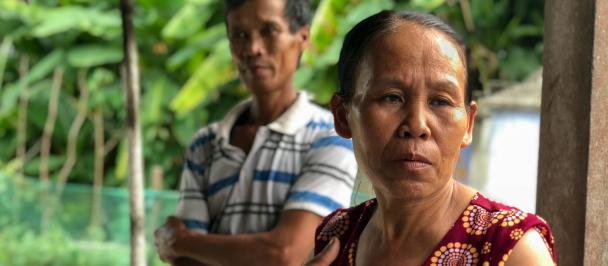The recently concluded Global Platform for Disaster Risk Reduction (GPDRR 2019) had a major focus on inclusiveness. However, in spite of being widely recognized as critical for recovery, addressing it has become a big conundrum. Listening to the conversations, this sense became very palpable. Well intentioned assertions to ensure widespread inclusiveness across all strands of the 2030 Agenda are truly something easier said than done.
The GPDRR’s focus on the need to reap the resilience dividend by fostering inclusive societies has brought about the need to think through the notion of inclusiveness. For substantive progress towards achieving the 2030 Agenda (the Sustainable Development Goals, the Paris Agreement, the Sendai Framework for DRR and the New Urban Agenda), our understanding of inclusiveness needs to expand.
It is imperative to widen our understanding so we can take a more comprehensive approach. The common interpretation of inclusiveness is the need to ensure all segments of society participate in decision-making. While this is critical, we have known the benefits of diverse participation for decades. What other perspectives that need to be considered??
I believe we need to think more laterally about why inclusiveness is so important and to take into account the following:
- Include all types of risk into our decision-making processes. There is increasing evidence of the mutually reinforcing character of risks which are seemingly unconnected. A recent report digs into these interactions between different risks, and cites examples where the initial trigger could be categorized as an individual risk, but in reality, the depth of the impacts were due to a coming together of many other risks. For example, the 1990s droughts in Somalia increased demand for ecosystem services as a source of livelihoods. With limited resources, competition and eventually conflict erupted. It would be simple to look at the standard of living in Somalia and attribute it to the risks posed by conflict, but actually the reason development there is so difficult, is due to the complex interactions of different risks, such as weak governance and environmental management.
- Include all socio-economic and development areas and not treat a particular risk as a stand-alone issue. We do not need to see risks only through the prism of mortality, damage and loss. They have much wider and deeper imprints which go beyond immediate statistics. This is borne out from the fact that small-scale disasters are having a much more long-lasting effect on people, their livelihoods and socio-economic assets than major ones. During my work on climate resilience in the Himalayan region, the people I worked with said that the loss of their common community assets, such water-mills, was of greater concern to them than any other personal asset.
- One-track approaches need to be shunned in favour of multi-disciplinary and multi-dimensional approaches. The idea should be to identify approaches which will deliver dividends across a spectrum of issues. Practitioners often fail to to look beyond their immediate thematic area for development solutions, and this has become a major deterrent to effective risk management.
- While identifying disaster risk management interventions in communities in Kenya and Uganda and talking to people, I was struck by the fact that the top three needs related to information going beyond early warning and including climate trends, and market demands; water security quite understandable in a water-scarce region; and livelihood diversification. Interventions addressing these issues are traditionally not considered part of DRR programmes.
- Inclusive governance – attaining effective development and risk management will require focused attention on ensuring seamless horizontal and vertical integration across different administrative levels as well as across all stakeholders. The commonly understood notion of participatory and inclusive governance needs a re-boot, to promote an expanding circle of inclusion and engagement.
- Include a wider coalition of actors – the action needs to go beyond the traditional focus on the public sphere to encompass the private sector, academia, technical and research institutions, think tanks, socio-economic and cultural influencers to help generate newer ideas and approaches to vest the much-needed impetus for the 2030 Agenda.
We need to include all of society in our decision-making processes to ensure we address the pressing needs of the marginal, the vulnerable, and the discriminated. When we do that, we’ll also get the most diverse selection of different risk perspectives. But we need to also think of inclusiveness as going beyond including people to include different practices, institutions and different ways of thinking about problems. Most crucially it’s imperative to understand that inclusion is necessary due to the interconnected nature of the issues we face.

 Locations
Locations
